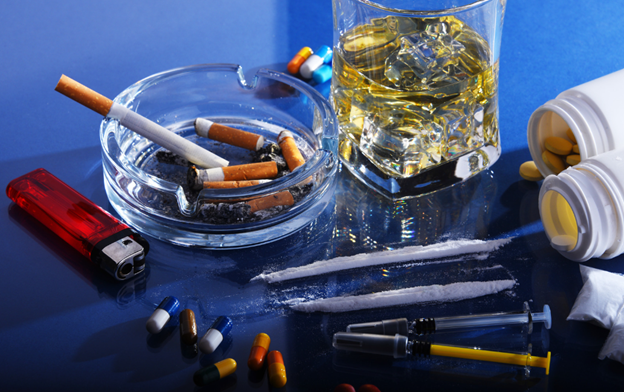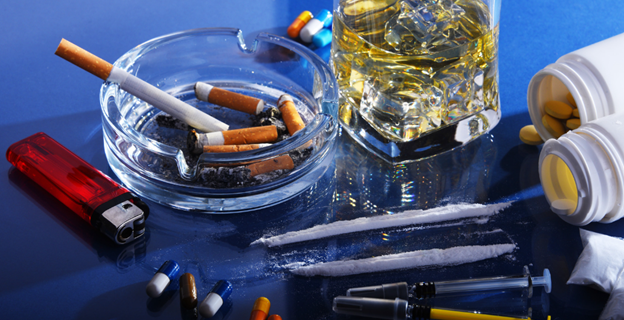What is the most addictive substance? This may be a seemingly simple question, but it is actually pretty complicated to answer. Some substances can be more addictive than others, but the question is, what makes them so addictive and how do people develop substance abuse in the first place?
Let’s answer all these questions and rank the top ten most addictive substances according to studies.
What Makes Substances Addictive?
Imagine the brain as this complex system of networks and circuits. Once the brain is exposed to prolonged use of addictive substances, its wirings are disrupted and it begins to change. Important brain regions that handle helpful brain processes are destroyed or hijacked to work against you.
To put it simply, addictive substances would hijack the pleasure circuits in the brain. This will then lead you to want more and more of the substance until you become addicted. Once you become dependent on these substances, they can also send you into an emotional overdrive, causing anxiety and stress.
Substance misuse can affect different aspects of your life and can cause any or all of the following:
- A range of health problems like heart disease, liver damage, and respiratory infections
- Mental health issues like anxiety, depression, and psychosis
- Long-term impairment of cognitive functions such as memory, attention, and decision-making
- Risky behaviors including engaging in criminal activity
- Social isolation and loss of support system
- Financial instability possibly caused by loss of employment due to poor job performance
- A range of legal issues including arrests and incarceration
A clearer understanding of the risks of using addictive sentences can hopefully help people steer clear of them. It could also help you provide support in case you have a loved one who suffers from substance use disorder.

Most Addictive Substances Ranked
Ranking addictive drugs is not as straightforward as it sounds. Even researchers have different views on it. The addictive potential of a drug and its ranking are influenced by various factors including:
- the drug’s street value
- how easy it is to access the substance
- how much the drug activates the brain’s dopamine systems
- how easily it can hook a person who tries it
- the drug’s pleasure index
- the extent of the withdrawal symptoms
- the overall harm it causes
Taking the aforementioned factors into consideration, here’s a list of the ten most addictive substances.
1. Heroin
Heroin is an opiate drug that can be injected, snorted, or smoked. In 2020, 691,000 Americans aged 12 or older had a heroin disorder. While heroin usage has continued to decrease since 2010, the number of deaths due to heroin overdose continues to rise.
Heroin is a highly addictive drug that induces a rush of euphoria as it causes an increase in the level of dopamine in the brain’s reward system. It also does not take long for one to develop a tolerance to Heroin. Users then need to keep increasing their dose to get the same level of high.
2. Cocaine
Cocaine is a white powdery drug which is an addictive stimulant. It increases dopamine levels, leading to euphoria and heightened energy. Cocaine is also manufactured in a rock form called crack cocaine which creates an intense high that kicks in faster.
Cocaine has been reported as the second most widely used drug in the US. This is likely because the brain quickly adapts to the elevated dopamine levels which results in the users chasing the same effects with higher doses.
3. Nicotine
Nicotine is the main addictive component of tobacco. There have been studies on certain positive short-term effects of nicotine on the brain. These, along with nicotine withdrawal symptoms, can make it hard to quit nicotine use or smoking.
The World Health Organization reported that there are an estimated 1.25 billion tobacco users in the world. This large number of users is mainly because it is a common and legal substance to which people have easy access.
4. Barbiturates
Barbiturates are prescription drugs that can be very addictive because of their impact on the central nervous system. They enhance the activity of GABA, a neurotransmitter that inhibits brain activity, producing sedative, anxiolytic, and euphoric effects.
Like in most addictive drugs, tolerance develops over time, requiring higher doses to achieve the same effects. Dependence develops as the body adjusts to their presence and leads to withdrawal symptoms once stopped.
5. Alcohol
Alcohol intake induces relaxation and reduces anxiety while simultaneously increasing dopamine levels in the brain. These rewarding effects reinforce continued drinking. However, with continuous and excessive drinking, the body and the brain become reliant on alcohol in order to function normally.
Withdrawal symptoms and cravings further perpetuate the cycle of dependence, making it difficult to quit. Alcohol might not be considered a drug by many, but alcohol dependence is quite common. Since alcohol is easily accessible, its misuse is prevalent not only in adults but also in youth.
6. Fentanyl
Fentanyl is a highly addictive drug known as the synthetic version of heroin. It is actually a strong opioid medicine prescribed for severe pain. Dependence on Fentanyl, along with other painkillers, is more prevalent in women than in men. This is because women are more likely to have chronic pain.
Fentanyl binds strongly to the brain’s opioid receptors. Its potency, being 50-100 times stronger than morphine, results in quick tolerance, where increasingly higher doses are needed to achieve the same effect. A combination of euphoria, tolerance, and dependence drives fentanyl dependence.
7. Methadone
Methadone is intended to help control cravings for Heroin and narcotic painkiller-dependent individuals. Unfortunately, it is often abused and as such has been the subject of restriction laws and revisions in regulation laws.
Like other opioids, methadone causes pain relief and euphoria, although more gradually and with a longer duration. This activation of opioid receptors leads to increased dopamine levels, reinforcing drug-taking behavior.
8. Benzodiazepines
Benzodiazepines or Benzos are commonly prescribed in the US to help reduce anxiety and seizures. Benzos include well-known prescription medicines Xanax and Valium. These are highly addictive due to their effects on the brain’s neurotransmitters.
They create a euphoric effect resulting in a calming and pleasurable experience. When not used for its intended purpose over an extended period of time, the brain will eventually rely on the drug to maintain normal function.
9. Amphetamines and Crystal Meth
Amphetamines were originally used to treat Attention Deficit Disorder and narcolepsy. Sadly, there’s a wide and rampant circulation of illegally produced Amphetamines such as crystal meth. Crystal meth is known to be extra potent and extremely harmful.
Amphetamines significantly increase dopamine and norepinephrine levels in the brain. These stimulants cause heightened alertness, energy, and intense euphoria. The pleasurable effects lead to repeated use which in turn activates the brain’s reward system.
10. Cannabis
Cannabis includes all products derived from the plants Cannabis sativa and Cannabis indica. More commonly known as Marijuana, it is often argued to be medicinal. While this is true, it is also a fact that marijuana misuse leads to the development of marijuana use disorder.
THC, the active ingredient of cannabis interacts with the brain’s endocannabinoid system. It stimulates dopamine release leading to pleasurable sensations. Extended exposure to THC reduces the brain’s sensitivity and natural dopamine production.
Without a doubt, the list of addictive substances does not stop at ten. Despite alarming mortality rates, many people still choose to try or to continue using illicit drugs. While some substance dependence cases are not intentional, most people go into it knowing the risk of having substance use disorder.
Navigate and Combat the Effects of Addictive Substances
The misuse of addictive sentences can be greatly detrimental to one’s health. This is why it is important to have access to reliable information and effective treatment. Our team of professionals at Positive Sobriety Institute in Chicago, IL is equipped with extensive knowledge as well as great compassion for every individual battling substance dependence.
We will help you navigate the risks and provide you with continuing care in your path to recovery. Stop further damage caused by addictive substances. Get Help Today!


